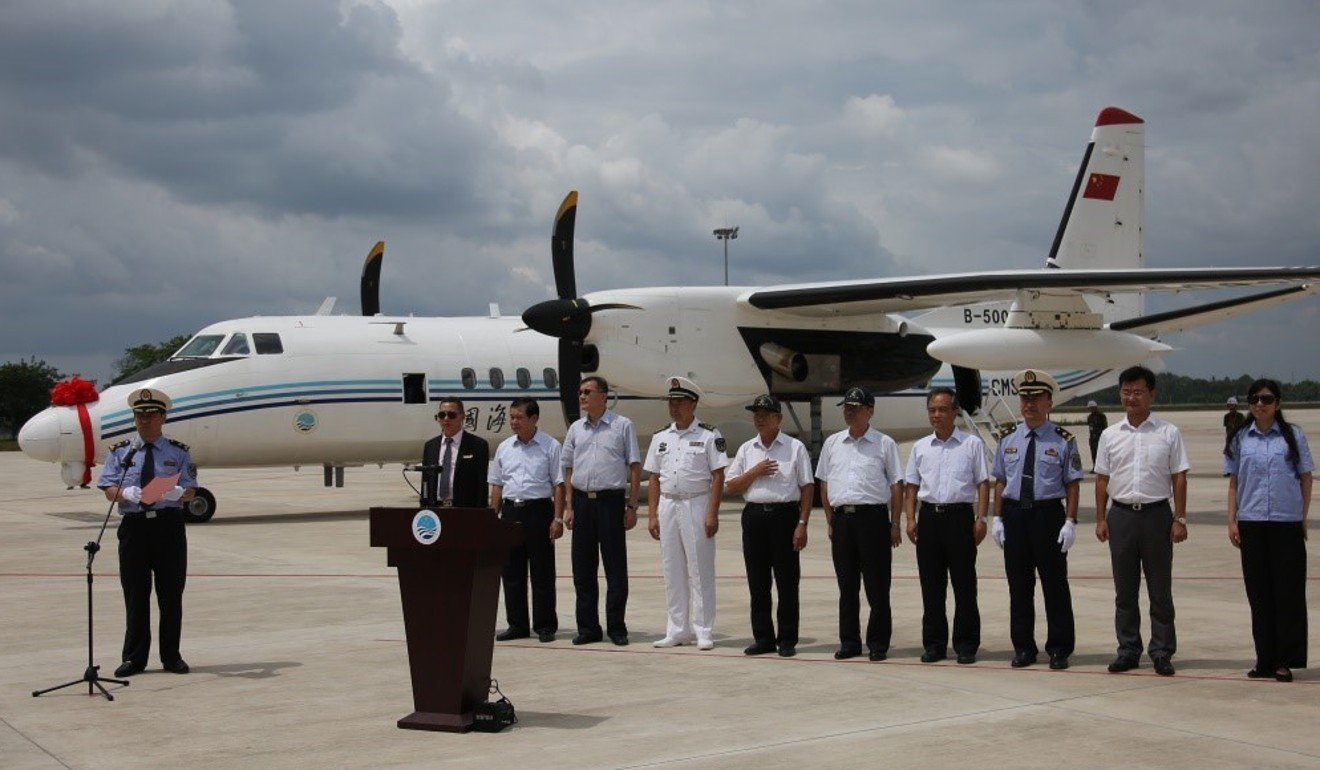
With a 30m wingspan and 2,450km range, this surveillance plane can cover the entire South China Sea
Latest addition to State Oceanic Administration’s fleet will give it the scope to monitor the entire South China Sea, in all weather conditions, day or night
The launch of a new medium-to-long-range maritime reconnaissance aircraft is set take China’s surveillance capabilities to unprecedented heights, though experts have mixed views on how the aircraft will be received by the country’s neighbours.
The B-5002, which went into service on June 26 at the South China Sea Branch of the State Oceanic Administration, is the largest and best-equipped plane in the administration’s surveillance fleet.
With a wingspan of about 30 metres and maximum range of 2,450km, it has the capacity, at least in theory, to monitor and respond to incidents across the whole of the South China Sea, China Ocean News reported.
According to Collin Koh, a maritime expert from the S. Rajaratnam School of International Studies at Singapore’s Nanyang Technological University, the B-5002 will redefine the administration’s reconnaissance capabilities.
While the current fleet of converted Y-12 light maritime surveillance planes are limited in terms of range, endurance and payload, the B-5002 allows Beijing to support surface patrols further out at sea, and for longer periods, he told the Post.

“Having this new plane will also give China a new flexibility to contribute to regional maritime security, such as in event of an aeronautical disaster like the MH370,” Koh said, referring to the Malaysia Airlines flight that went missing in 2014 en route from Kuala Lumpur to Beijing.
One of the B-5002’s key technologies is a “sensor suite” comprising both surface search radar and electro-optic detection capabilities, which allows it to operate in all weather and visibility conditions, day or night, Koh said.
As the B-5002 is classified under China’s maritime law as a civilian aircraft it will not be armed and its sensors will be optimised for surveillance rather than combat. Its primary functions will be the protection of the maritime environment, island exploitation, and maritime research and rescue, he added.
According to Beijing-based military expert Li Jie, one of the principal benefits of the B-5002 is that it will allow China to take a more subtle approach to monitoring and safeguarding its maritime interests.
“If China deploys a warship to carry out a surveillance mission in the South China Sea, it draws a lot of criticism and raises tensions in the region,” he told the Post.
“In contrast, if it uses a B-5002 in a policing role, it can perform its duties better [and without causing upset],” he said.
Koh, however, is less certain on how China’’s neighbours might react.
“Even if the plane doesn’t pose a direct threat to shipping or maritime safety, it would still put other claimants in regional maritime disputes on high alert,” he said.
Regardless, the B-5002 will provide a massive boost for Beijing’s maritime law enforcement agencies, he said.
“The Chinese coastguard in particular, which has been at the forefront of the action in disputed waters, will receive much better aerial support,” Koh said.
The B-5002 surveillance plane was manufactured by China’s AVIC Xian Aircraft Industry Group at a cost of almost 100 million yuan (US$14.8 million). It was modelled on the domestically developed Xinzhou-60 plane.
Chinese media reported earlier that Beijing was keen to have a surveillance aircraft similar to Japan’s P-3C Orion.

